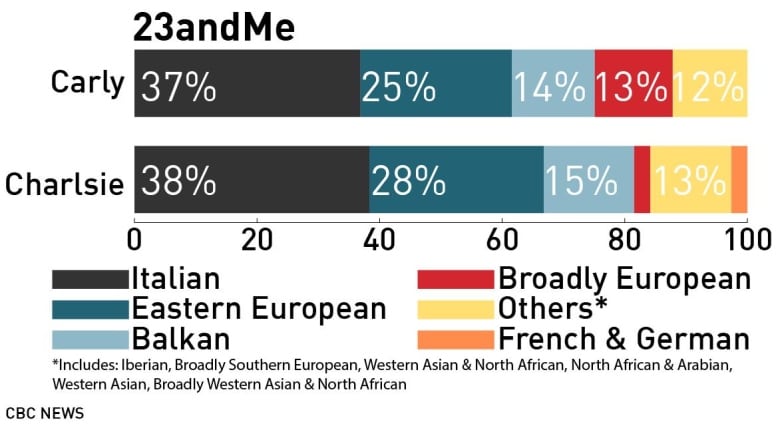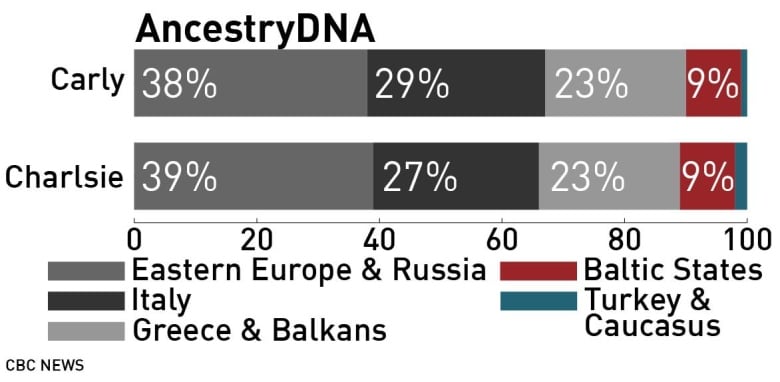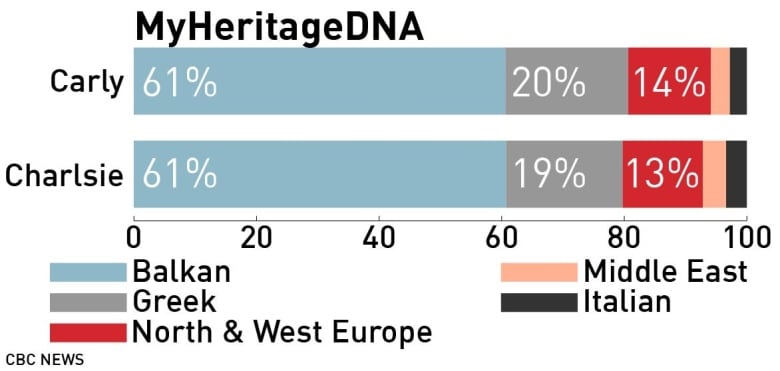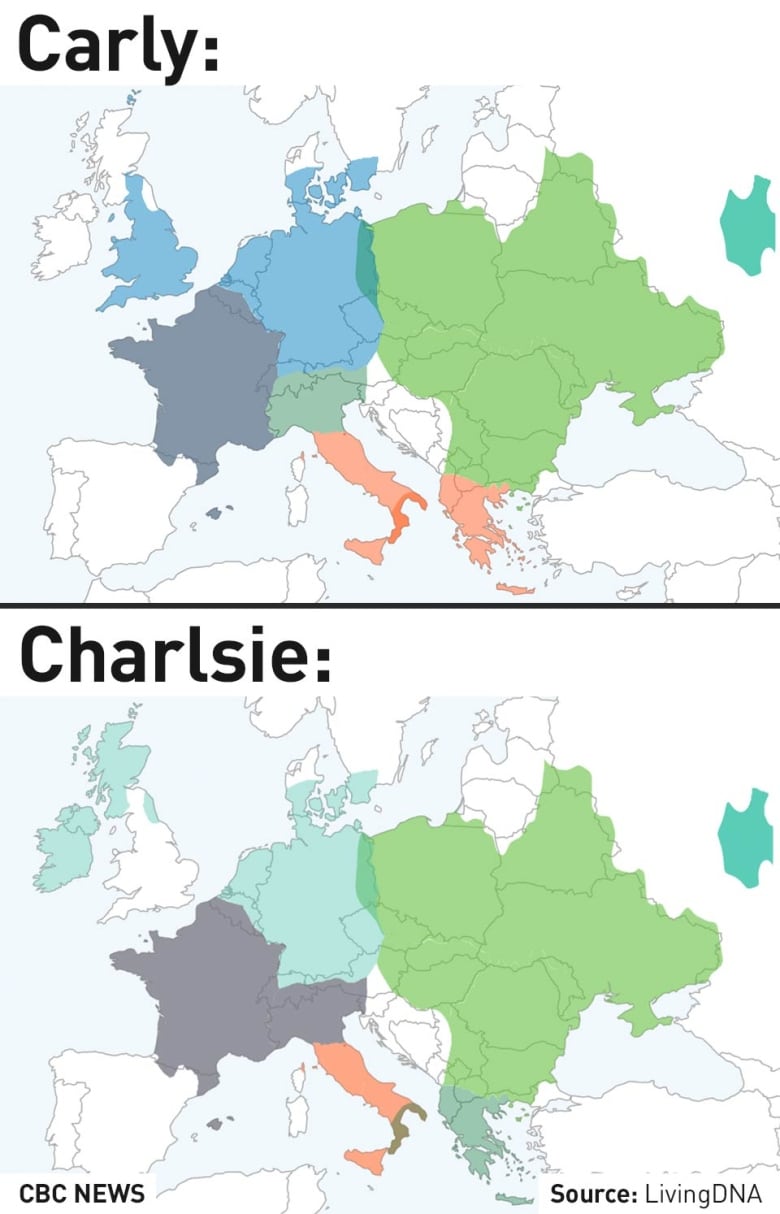Last spring, Marketplace host Charlsie Agro and her twin sister, Carly, bought home kits from AncestryDNA, MyHeritage, 23andMe, FamilyTreeDNA and Living DNA, and mailed samples of their DNA to each company for analysis.
Despite having virtually identical DNA, the twins did not receive matching results from any of the companies.
In most cases, the results from the same company traced each sister’s ancestry to the same parts of the world — albeit by varying percentages.
But the results from California-based 23andMe seemed to suggest each twin had unique twists in their ancestry composition.
According to 23andMe’s findings, Charlsie has nearly 10 per cent less “broadly European” ancestry than Carly. She also has French and German ancestry (2.6 per cent) that her sister doesn’t share.
The identical twins also apparently have different degrees of Eastern European heritage — 28 per cent for Charlsie compared to 24.7 per cent for Carly. And while Carly’s Eastern European ancestry was linked to Poland, the country was listed as “not detected” in Charlsie’s results.
“The fact that they present different results for you and your sister, I find very mystifying,” said Dr. Mark Gerstein, a computational biologist at Yale University.
[…]
AncestryDNA found the twins have predominantly Eastern European ancestry (38 per cent for Carly and 39 per cent for Charlsie).
But the results from MyHeritage trace the majority of their ancestry to the Balkans (60.6 per cent for Carly and 60.7 per cent for Charlsie).
One of the more surprising findings was in Living DNA’s results, which pointed to a small percentage of ancestry from England for Carly, but Scotland and Ireland for Charlsie.
Another twist came courtesy of FamilyTreeDNA, which assigned 13-14 per cent of the twins’ ancestry to the Middle East — significantly more than the other four companies, two of which found no trace at all.
Paul Maier, chief geneticist at FamilyTreeDNA, acknowledges that identifying genetic distinctions in people from different places is a challenge.
“Finding the boundaries is itself kind of a frontiering science, so I would say that makes it kind of a science and an art,” Maier said in a phone interview.
Source: Twins get some ‘mystifying’ results when they put 5 DNA ancestry kits to the test | CBC News

Robin Edgar
Organisational Structures | Technology and Science | Military, IT and Lifestyle consultancy | Social, Broadcast & Cross Media | Flying aircraft




